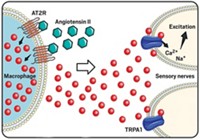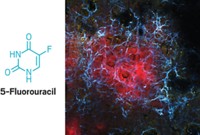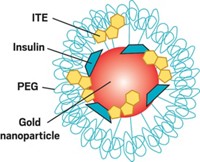Advertisement
Grab your lab coat. Let's get started
Welcome!
Welcome!
Create an account below to get 6 C&EN articles per month, receive newsletters and more - all free.
It seems this is your first time logging in online. Please enter the following information to continue.
As an ACS member you automatically get access to this site. All we need is few more details to create your reading experience.
Not you? Sign in with a different account.
Not you? Sign in with a different account.
ERROR 1
ERROR 1
ERROR 2
ERROR 2
ERROR 2
ERROR 2
ERROR 2
Password and Confirm password must match.
If you have an ACS member number, please enter it here so we can link this account to your membership. (optional)
ERROR 2
ACS values your privacy. By submitting your information, you are gaining access to C&EN and subscribing to our weekly newsletter. We use the information you provide to make your reading experience better, and we will never sell your data to third party members.
Biological Chemistry
Nerve signaling encourages tumor growth
Neurotransmitters act through adrenergic receptors to promote formation of tumor blood vessels
by Michael Torrice
October 30, 2017
| A version of this story appeared in
Volume 95, Issue 43
Nerves inside prostate tumors release chemical compounds that stimulate the growth of blood vessels feeding the cancer cells, according to a study in mice (Science 2017, DOI: 10.1126/science.aah5072). Therapies that block this type of chemical signaling could help slow the growth of tumors, the researchers say. In 2013, Paul S. Frenette of Albert Einstein College of Medicine and colleagues found that destroying nerves in tumors halted the progression of prostate cancer in mice. These specific nerves send signals by releasing the neurotransmitter noradrenaline, which binds to the β2-adrenergic receptor (ADRβ2). In the new study, the researchers determined that noradrenaline activates ADRβ2 in the endothelial cells of the mice’s blood vessels. Once activated, ADRβ2 promotes the formation of new blood vessels—a process called angiogenesis—by ensuring the cells continue to metabolize glucose through glycolysis. When the researchers knocked out the gene for ADRβ2 in the endothelial cells, the cells used an alternative metabolic pathway called oxidative phosphorylation, and as a result, there was little blood vessel growth. Frenette points out that some anticancer therapies targeting angiogenesis have not had long-term success against prostate tumors. He proposes studying the effectiveness of targeting angiogenesis along with nerve signaling with β-blockers, which inhibit ADRβ2.





Join the conversation
Contact the reporter
Submit a Letter to the Editor for publication
Engage with us on Twitter